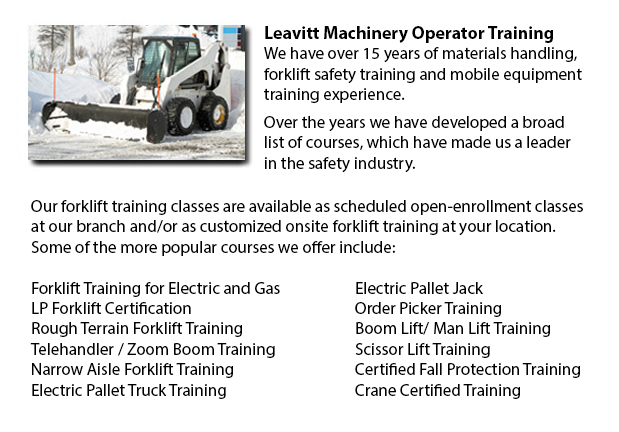
Skid Steer Ticket Vaughan - On a skid-steer loader, the lift arms are alongside the driver together with pivot points at the rear of the driver's shoulders. This makes them different compared to a conventional front loader. Due to the operator's nearness to moving booms, early skid loaders were not as safe as conventional front loaders, particularly all through the operator's entry and exit. Today's' modern skid-steer loaders have numerous features to be able to protect the driver like fully-enclosed cabs. Similar to various front loaders, the skid-steer model can push materials from one site to another, can load material into a truck or trailer and can carry material in its bucket.
Operation
There are a lot of times where the skid-steer loader can be utilized instead of a large excavator on the job location for digging holes from within. To begin, the loader digs a ramp to be utilized to excavate the material out of the hole. As the excavation deepens, the equipment reshapes the ramp making it longer and steeper. This is a remarkably useful technique for digging under a structure where there is not enough overhead clearance for the boom of a big excavator. Like for instance, this is a common scenario when digging a basement below an existing structure or home.
There is much flexibility in the attachments which the skid steer loaders are capable of. For example, the conventional bucket of many of these loaders can be replaced with various accessories which are powered by the loader's hydraulic system, comprising cement mixers, pallet forks, backhoes, tree spades, sweepers, mowers and snow blades. Various other popular specialized attachments and buckets include angle brooms, dumping hoppers, wood chipper machines, grapples, tillers, stump grinders rippers, wheel saws, snow blades, and trenchers.
History
In 1957, the first front-end, 3-wheeled loader was invented in Rothsay, in the state of Minnesota by brothers Louis and Cyril Keller. The brothers invented the loader in order to help a farmer mechanize the method of cleaning turkey manure from his barn. This equipment was light and compact and included a rear caster wheel which enabled it to maneuver and turn around within its own length, enabling it to execute the same tasks as a conventional front-end loader.
During 1958, the Melroe brothers of Melroe Manufacturing Company in Gwinner, N.D. obtained the rights to the Keller loader. They hired the Keller brothers to continue refining their loader invention. The M-200 Melroe was actually the end result of this particular partnership. This particular model was a self-propelled loader which was launched to the market during 1958. The M-200 Melroe featured a a rear caster wheel, a 12.9 HP engine, a 750 lb lift capacity and two independent front drive wheels. By nineteen sixty, they replaced the caster wheel with a back axle and introduced the first 4 wheel skid steer loader which was called the M-400.
The term "Bobcat" is used as a generic term for skid-steer loaders. The M-400 soon after became the Melroe Bobcat. The M-440 version has rated operating capacity of 1100 lbs powered by a 15.5 HP engine. The business continued the skid-steer development into the mid 1960s and introduced the M600 loader.
-
Forklift License Vaughan
Forklift License Vaughan - Getting a forklift certification or forklift license in North America would require the trainee to do hands-on training in addition to classroom instruction. The provincial, federal and state regulatory bodies are responsib... More -
Forklift Ticket Vaughan
Forklift Ticket Vaughan - Forklifts and the pallet jack is meant for just about the same reason. They work to raise and move supplies and goods from one place to another. This however is where the comparison stops though. With the pallet jack, the be... More -
Aerial Lift Certification Vaughan
Aerial Lift Certification Vaughan - Aerial Lift Certification is for individuals who need an in-depth understanding of aerial lift safety. Operators and inspectors, supervisors, maintenance workers and construction craftsmen should perform a certific... More -
Manlift Certification Vaughan
Manlift Certification Vaughan - The Manlifts and Elevated Platforms course provides training on the rules, regulations and proper application of safe operating measures and work practices included in everyday activities for those who work making use... More -
Heavy Equipment Training Vaughan
Heavy Equipment Training Vaughan - The two most common kinds of heavy equipment training are categorized into the categories of machines; equipment that is fashioned with rubber tires or those with tracks. The tracked vehicle are heavy duty machines... More -
Boom Lift Ticket Vaughan
Boom Lift Ticket Vaughan - Boom lifts are equipment that has a platform that may be lowered or raised to different heights, thus making this piece of equipment an important necessity in a wide variety of professions. Offered in many different particu... More -
Telehandler License Vaughan
Telehandler License Vaughan - The telescopic handler or telehandler is a frequently used equipment in industrial and agricultural applications. This particular machine is the same in appearance to a forklift and also functions in a similar way, altho... More -
Scissor Lift Training Vaughan
Scissor Lift Training Vaughan - Scissor lifts have to be operated competently to be able to protect the safety of the machinery and the safety of others within the workplace. Operators who are skilled are trained to drive the particular kind of sciss... More

Forklift Training Vaughan
TOLL FREE: 1-888-254-6157
Vaughan, Ontario
forklifttrainingvaughan.com
Email Us
About Us


